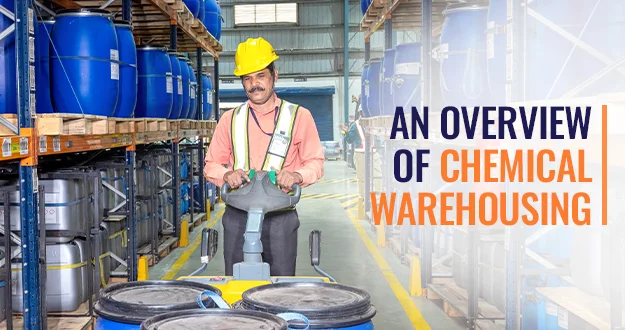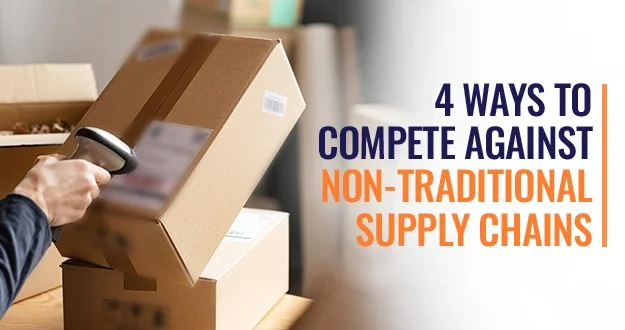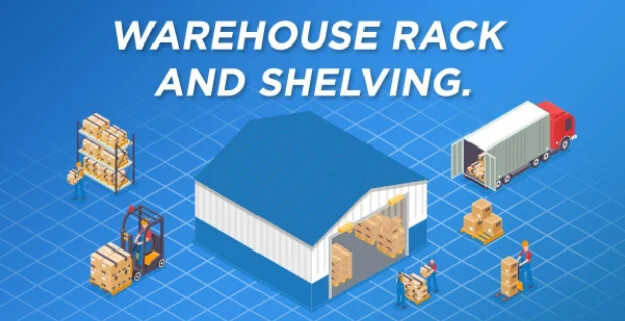
An Overview of Chemical Warehousing
Chemical warehousing involves storing and handling chemicals in a dedicated facility designed to chemicals may have explosive qualities, making them dangerous to people and the environment. To limit the danger of possible mishaps, specialists must handle and store chemicals. While not all chemicals are hazardous, it is nevertheless necessary to understand how to store them safely to avoid leaks, spoilage, or reactions. Ensure safety, compliance with regulations, and efficient inventory management.
According to industry reports, the global chemical warehousing market was valued at $15.3 billion in 2021. It is projected to grow at a compound annual growth rate (CAGR) of 3.8% from 2022 to 2031, reaching an estimated $22.1 billion by the end of 2031.
The first step in managing the hazards connected with storing chemicals is to seize the possible threats thoroughly. Due to the specialized nature of chemical warehousing, many chemical processing and manufacturing companies opt to outsource their product storage and delivery to a third-party logistics (3PL) partner with chemical storing experience.
Requirements for chemical warehousing
Each chemical class functions as its own industry, with its own set of norms and regulations for safe storage and handling. A few examples are as follows:
Explosives
Heat, stress, friction, or even static electricity may cause these compounds to explode. To avoid sparks or equipment backfires, all rooms in the distribution centre should be designated as "no spark" settings. This necessitates the use of non-spark forklift trucks and EE- and EEE-rated equipment.
Flammable liquids and solids
Warehouses must keep all flammable goods in a single, secure location away from any possible ignition sources. Rack stack storage and a rack firehouse pump system are required for flammable liquids and gases (sprinklers). To guarantee that all systems are effectively maintained, and up to code, preventive maintenance should be performed on a regular basis.
Gases
Extreme caution is required when storing and handling compressed gases since falling or knocking over a cylinder may cause the energy within to be swiftly released, exploding the cylinder like a rocket. The kind of gas will determine the storage needs. If the gas is flammable, it is kept in an explosive chamber. Some gases may contain a blend of poisons and corrosives, causing them to enter the toxic chamber.
Oxidizers
Oxidizers need their own space and should not be combined with other goods, particularly flammable or combustible materials. Oxidizers should be stored in a cool, dry, adequately aired and out of direct sunlight. Oxidizer rooms are darkened and aired to decrease odour and facilitate circulation.
Poisons
Poisons need to be classed separately. This space requires ventilation and separation from combustibles. Typically, the stench is sucked out of the air vents and carried to the charcoal bins above the warehouse. Poisons should be labelled, processed, and palletized in a poison-coded room. Poisonous materials should never leave their designated area and should never be seen in any other section of the warehouse.
Corrosives
Corrosives must be kept in their own room and handled with extreme care. Workers should wear goggles, gloves, and closed-toe shoes when working with corrosives, just as they would with other chemicals. Rack water systems are not permitted in the classified corrosive room. Pallets entering the warehouse are brought to a separate chamber with odour-sucking air vents. The commodity should be marked, processed, and palletized in the classified corrosive room.
Safety Measures and Best Practices in Chemical Warehousing
The handling and storage of chemicals require stringent safety measures and best practices to mitigate risks and ensure a safe working environment. Implementing these measures helps prevent accidents, protect employees, and comply with regulatory requirements. Here are some key safety measures and best practices for chemical warehousing:
1. Comprehensive Employee Training
One of the most critical safety measures is comprehensive training for all employees. Training programs should cover:
- Proper handling and storage techniques for different types of chemicals.
- Use of personal protective equipment (PPE) such as gloves, goggles, and respirators.
- Emergency response procedures for spills, fires, and exposure incidents.
2. Proper Labeling and Documentation
Accurate labeling and documentation are essential for the safe management of chemicals. Each container should be clearly labeled with:
- The chemical name and any hazardous ingredients.
- Hazard symbols and precautionary statements.
- Handling and storage instructions.
- First aid and emergency contact information.
3. Adequate Ventilation and Environmental Controls
Chemical warehouses must have proper ventilation systems to prevent the accumulation of toxic fumes and vapors. This is particularly important for flammable or volatile chemicals. Environmental controls may include:
- Ventilation systems with exhaust fans and air purification filters.
- Temperature and humidity control to prevent chemical degradation or reactions.
- Monitoring systems to detect gas leaks or changes in air quality.
4. Storage Segregation and Compatibility
Proper storage segregation is crucial to prevent chemical reactions that can lead to fires, explosions, or toxic releases. Best practices include:
- Storing incompatible chemicals separately, according to compatibility charts.
- Using dedicated storage areas or cabinets for specific classes of chemicals (e.g., flammables, corrosives, oxidizers).
- Implementing secondary containment measures, such as spill pallets or bunds, to contain leaks or spills.
5. Emergency Response Planning
A robust emergency response plan is essential to address accidents and incidents quickly and effectively. Key components of an emergency response plan include:
- Designated emergency response teams with clearly defined roles and responsibilities.
- Accessible and well-maintained emergency equipment, such as fire extinguishers, spill kits, and first aid supplies.
- Clear evacuation routes and assembly points.
- Regular emergency drills to ensure all employees are familiar with procedures.
Conclusion
Many storage and distribution companies in India opt to collaborate with a chemical logistics 3PL because of the specialized nature of chemical storage operations. An experienced 3PL that understands your chemical class can help you save money on overall logistics expenses while also giving you peace of mind that your hazardous chemical goods will be handled appropriately.



